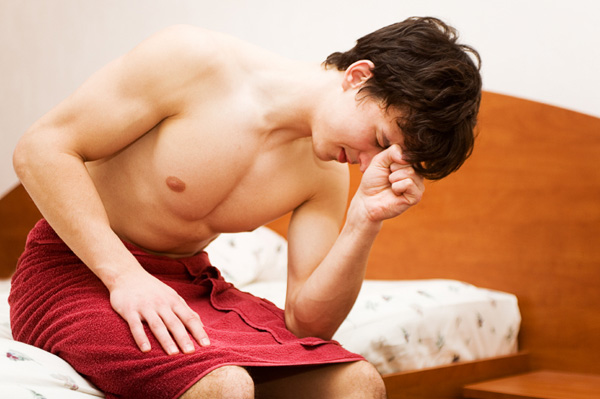There are plenty causes for low libido and erectile dysfunction. One common cause resonates with the low testosterone (Low T) problem. Although some women may believe their partner's sexual difficulties may be a factor of stress or self-esteem, they neglect to realize the problem may simply be due to a testosterone imbalance. It's surprisingly common in men ages 35 and older, and can cause serious problems with relationships and sexual intimacy.

To get to the bottom of some of this type of low-libido and erectile dysfunction issue, we talked to Dr. Abraham Morgentaler, a Harvard urologist, men's health specialist and author of "Testosterone for Life."
Q: What is Low T?
A: Low T refers to a deficiency of the testosterone hormone.
Q: Is that the same as erectile dysfunction?
A: Erectile dysfunction means a man is having difficulties achieving an adequate erection for intercourse. Low T can cause erectile dysfunction, as well as many other symptoms.
Q: What are the symptoms?
A: The most common symptoms of Low T are low sexual desire (libido), erectile dysfunction, reduced energy/chronic fatigue, depressed mood, loss of muscle

Q: What causes Low T?
A: Low T can be caused by a number of medical conditions, including pituitary and testicular disorders, and by some medications. And it is very common among men with diabetes and obesity. But it appears to be most frequently caused just by aging.
Q: Can it be prevented?
A: At this point we do not know any way to prevent the development of Low T.
Q: If you suspect your partner is having a Low T issue, how should you address it with him? What's the best way to discuss the topic? Since the issue is a super-sensitive one, how can one bring it up to their partner?
A: My recommendation is to say that there may be a medical condition causing the symptoms, and that a visit to the doctor together with a blood test can confirm the diagnosis. The key is that Low T is treatable, and many men will see their symptoms disappear with treatment.
Q: What are some potential treatments for Low T?
A: The most common form of treatment for Low T is a gel rubbed into the skin. Patches, injections (every two weeks) or an implantable pellet placed every 3-6 months are the other main treatments.
Q: What are the side effects, if any, to those treatments?
A: Most men experience no side effects. Rarely, men may experience acne or breast tenderness.
Q: Anything else couples should know when facing the problem of Low T? How can a couple deal with it the best way?
A: The most important things to know about Low T is that it is common, and treatment makes many men and their partners much happier. Many men say they feel "normal" again once Low T has been diagnosed and treated. If a woman notices that her man seems down, less interested in sex, or is having trouble with erections, then the best thing she may be able to do for him and for herself is to encourage him to see his doctor to get checked out for Low T.